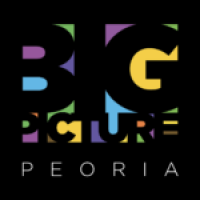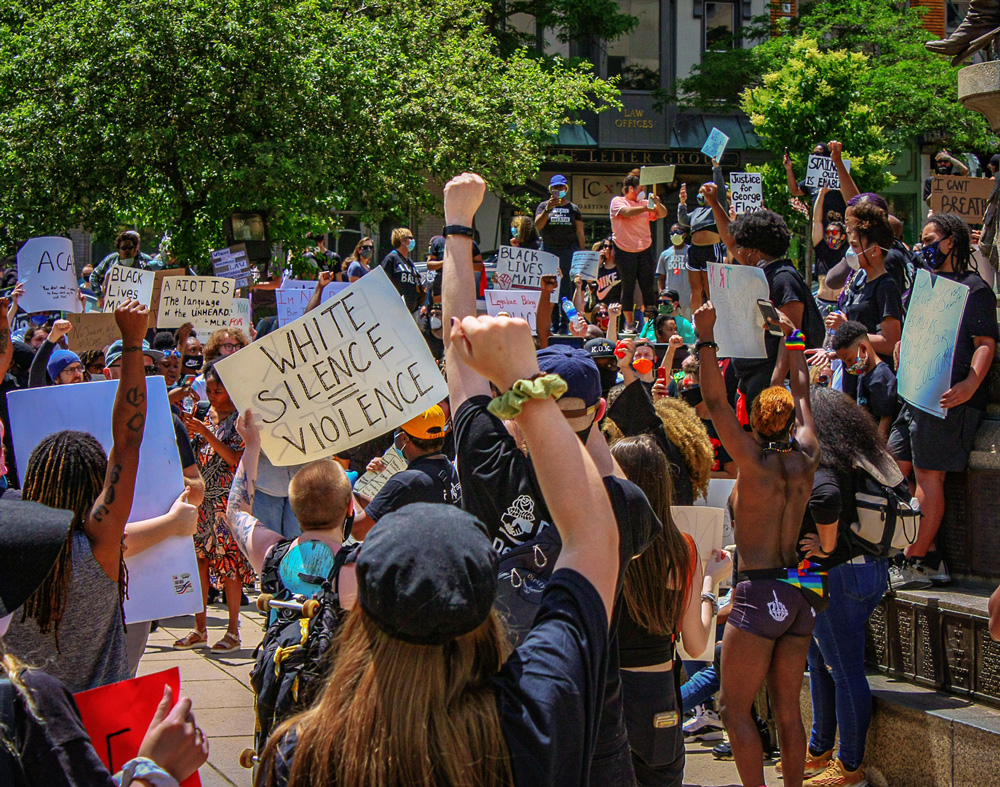The Role of Online Communities in Social Justice
By Adeline Ferolo
The notion of community is rooted in uplifting others to help them succeed—and it is this belief that is the backbone of a successful community. Within Peoria, Illinois, a group of young people have acted upon this concept to address issues of social injustice throughout the city. In the wake of a new wave within the Black Lives Matter (BLM) Movement, the youth-led and Peoria-based organization Young Revolution coordinated two peaceful protests that addressed issues of police brutality within Peoria. The first protest, called the “We Matter March,” took place on May 30th with an estimated attendance of 1,000 people, according to the Peoria Journal Star (Renken). The participants came from a wide range of ethnicities and ages across the region. The objective was clear: to hold the police accountable for previous injustices of brutality, which have historically and disproportionally impacted the Black community.
These marches signify a new sense of community within Peoria, specifically in the youth sector, who are engaged in a progressive, worldwide view of politics— especially when compared to previous generations. According to the Pew Research Center, Gen Z encounters a significant gap in beliefs concerning race relations, global warming, and government involvement when compared to their elder counterparts within Gen X and the Baby Boomer Generation. Gen Z is proactive in sharing their thoughts through increasingly accessible technology. Within various social media platforms, including Instagram, YouTube, and TikTok, young activists are voicing their opinion regarding many topics of interest, ranging from government reform, Native American rights, reproductive justice, and policing reform. These online platforms create an unprecedented sense of community that was inaccessible to past generations due to a lack of technology. Almost all teenagers today have access to the internet and inevitably spend most of their time within an online community. A 2018 Pew Research Center survey found that “95% of 13- to 17-year-olds have access to a smartphone, and a similar share (97%) use at least one of seven major online platforms” (Parker). A digital community has evolved within these major online platforms to connect teens and facilitate the exchange of beliefs, morals, and ethics in a matter of milliseconds.
While online platforms have accelerated the process of acquiring and sharing information, as evident with the BLM movement in early summer 2020, simultaneously it has increased desensitization among teenagers. When important topics receive a lot of attention on social media, some teens join in simply because it may seem trendy. Rather than displaying empathy, they seek clout—looking for likes and shares, their posts become a form of performative activism. This form of activism is self-motivated in an attempt to appear helpful but is extremely destructive as it skims the surface of the issues in favor of gaining followers instead of understanding the problem itself. It is the responsibility of users within online platforms to educate themselves regarding social justice issues and to hold other users accountable. It is equally important to practice these values in the real world, by helping a neighbor mow their lawn or creating a recycling program within your neighborhood. These actions are essential in bridging the gap between virtual and real-life communities to make way for changes and reforms.
About Adeline Ferolo

Stories, arguably, are the most underrated form of currency that floods the digital world, through highlighted Instagram posts and viral YouTube videos. As a rising senior at Richwoods High School, Adeline Ferolo aims to express herself and the issues closest to her authentically through engaging, storytelling, and other mediums. She is a competitively academic student. Her interests range across many creative outlets—as an active writer for the Richwoods Shield, the monthly school newspaper, and as a contributor to the youth-led blog EnviroWrite, which explores rising environmental concerns. Recently she has discovered her passion for the medium of film after attending the National High School Institute summer program at Northwestern University, where she had previously studied creative-intensive subjects ranging from sustainable architecture to graphic design. Within the past year, she has focused her efforts on exploring the visual medium in both her academic and personal life, opting to create experimental videos for class projects and continuing to explore different aspects of the visual language.

